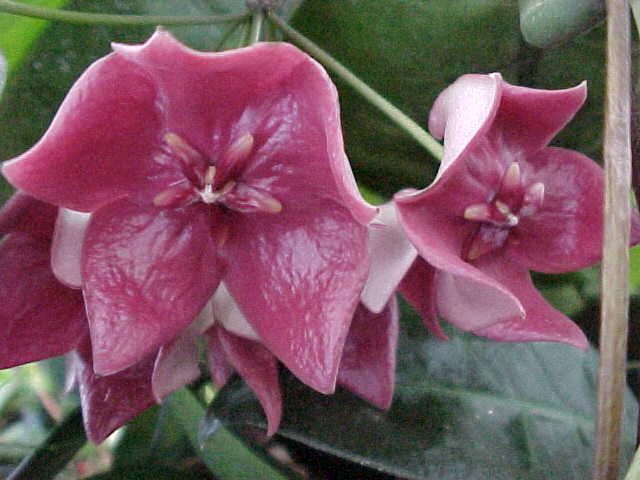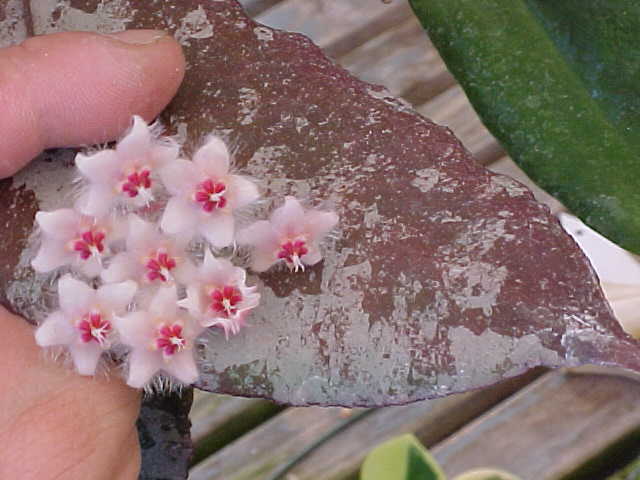
An easily grown variegated version of the ever popular Sweetheart Hoya
This hoya page is a helpful site in providing useful information regarding growing hoyas. Although the consideration of culture is designed for hoya growers in a warm tropical climate, the applications and methodology can be applied to subtropic and temperate regimes. Just use basic guidelines and cautions when it comes to cooler temperatures and shorter daylengths, etc.
Hoyas are easily grown plants that any beginner of plants can enjoy and grow. Members of the succulent family, these plants are rather forgiving and undemanding. Many grow from short stem pieces and will root naturally from stems that come into contact to soil surfaces. In the wild, most hoyas grow as epiphytes and cling their vines to tree trunks and xeriphytically onto rocks and cliff crevices. Just a small amount of water-retaining substrate is needed for their roots to take grasp onto and soon establish itself in that locale, growing independantly if severed or detached from the main growing portion. Most hoyas grow towards the light, so the portions exposed to as near full sun as possible usually bloom their best and produce the best characteristics for leaf pattern and color. Flowers usually emerge from a specialized stem called a spur or rachis. These spurs develop into long older stems as flower buds are formed, flowers develop and set seeds. So long as the growing tip is not damaged, the spur continues to grow and produce more buds and blooms. It is not a wise decision to remove this spur, even for the enjoyment of the cluster just for a day. You may pick off the idnividual flowers for your enjoyment, but please leave the spur for future enjoyment of these blooms from that locale of that plant.
Hoyas come in many variations as have been seen throughout the period that I have been growing hoyas. from the common ones such as Hoya asutralis and carnosa, to intricate flowering and foliage things that are myremcophylous or fuzzy or even patterened to resemble the skin of a lizard or dead looking to escape predation from scavenging animals, etc. Most hoyas have beautiful flowers that emit a perfumed night-time fragrance. But there are exceptions to the rule. Some have unpleasant odor that attract their pollinators such as flies and dung beetles. But for the most part, hoyas have a beautiful undescribable fragrance that attracts geckoes that wait nearby for unsuspecting moths and other insects also intrigued by their fragrances.
HOYAS BY MICHAEL MIYASHIRO



Adenium Cultivation in Hawaii
Sansevieria Page of Hawaii